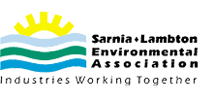Our History
1952
The St. Clair River Research Committee was formed as the first industry funded co-operative in Canada devoted to the protection of the environment. This committee concentrated its efforts on studies of sulphur dioxide and particulate matter in the air. They also monitored surface oil contamination found in the St. Clair River. Basic reports of data were shared within this group to begin developing a regional baseline to assess trends over time. These measurements were also used to confirm improvements realized as sites invested in new processes and technologies.
1967
The St Clair River Research Committee grew from three members to thirteen. The organization was officially established as a non-profit corporation under the name Lambton Industrial Society (LIS). Through joint and individual effort by member companies, the purpose of the Society was to promote and foster the protection of the environment, consistent with standards set by government regulation and good corporate citizenship.
1975
The LIS established the Bluewater Clear Oil Spills Group to protect the St. Clair River from shipping accidents and oil spills. During this same time, the Petroleum Association for Conservation of the Canadian Environment (PACE) did extensive work to establish local environmental cooperatives. In 1979, the Petroleum Industry Marine Environment Cooperative (PIMEC) was formed in Sarnia and maintained a significant inventory of specialized response equipment for member access.
1981
The Lambton Industrial Meteorological Alert (LIMA) regulation was created in partnership between the Lambton Industrial Society and the Province of Ontario. It was a strong example of industry and government partnering toward a common goal of environmental protection.
2000
The Lambton Industrial Society became the Sarnia-Lambton Environmental Association (SLEA), with a mission of being recognized by members, regulatory agencies, and the community for excellence in promoting and fostering a healthy environment consistent with sustainable development. By 2008, SLEA membership grew to 18 members as regional leaders in environmental protection.
2008
As an active member of the Lambton County Health Study Team, SLEA strongly endorsed a science-based approach to evaluate associations between environmental measures and health outcomes. At that time, SLEA partnered directly with the Ontario Ministry of Environment (MOE) and other stakeholders to design and conduct science-based studies of community exposure and health effects. After successfully completing Phase I and Phase II of this work, the Lambton County Health Study Team recommended a 5-year study design. In 2016, all members of SLEA aligned on contributing funding for this study; however, financial support from others was not granted and the study was cancelled.
2020
Today, SLEA continues to operate a state-of-the art air monitoring network and downriver monitoring facility. All operation and maintenance of the monitoring equipment is intentionally completed at arms-length by a third party vendor with no direct access by industry or government. Detailed annual reports that were once published by LIS/SLEA have now been replaced with virtual, near real-time data that is now openly shared on a publicly accessible website fully funded by SLEA.
SLEA is also very proud to continue its ongoing support of education in schools across the region through a partnership with the
St. Clair Regional Conservation Authority.
Strategies related to the improvement of the Sarnia-Lambton area airshed are now collaboratively addressed through
Clean Air Sarnia and Area (CASA). SLEA Co-Chairs CASA with the Ontario Ministry of Environment, Conservation and Parks (MECP). Discussions within CASA include various government agencies, industry associations, non-government organizations, and community groups all working together as one team toward improvement of the airshed.
SLEA also sits as Co-Chair of the Advisory Committee to the Sarnia Area Environmental Health Project (SAEHP). This project was commissioned in 2020 by the MECP with the Advisory Team providing feedback to MECP and their third-party consultants. The SAEHP Project Team provides regular updates to CASA and consults directly with local governments and First Nations. SAEHP Team updates are communicated to the public through the
CASA website.





